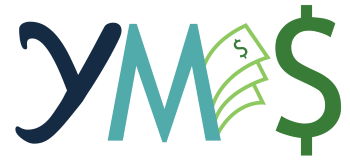Bad debt expense can impact a small business more than most expect. It directly affects income and cash flow, especially when customers don’t pay what they owe.
Knowing how it works helps you plan better and avoid sudden losses. This guide breaks down what small businesses need to understand.
Focus on how to manage it, track it, and prepare for it. Keep reading to learn more through the sections below using the term bad debt expense as a key focus.
What Is Bad Debt Expense
Bad debt expense is the cost of unpaid customer invoices. It shows up when a customer doesn’t settle their account and the business decides the money won’t be collected.
Small businesses often record it as an operating expense. This keeps financial reports accurate and up to date. It’s common in industries that offer credit or delayed payments. Recognizing it early prevents issues with overstated revenue.
Why It Matters for Small Businesses
Bad debt expense lowers profit and affects decision-making. For small businesses, every dollar counts, so unpaid invoices can hurt operations. Tracking this expense gives a clearer picture of financial health.
It also shows if the current billing and collection processes are effective. Too many bad debts may signal problems with customer screening. Fixing that early avoids long-term loss.
Common Causes of Bad Debt
Customers unable or unwilling to pay are the main reasons behind bad debt expense. Sometimes businesses extend credit too easily or fail to check credit history. Poor communication or unclear terms can also lead to non-payment.
Economic downturns and personal issues also affect customers’ ability to pay. Not all causes are preventable, but awareness helps reduce risk. Having firm payment policies limits exposure.
How to Record It Correctly
To stay compliant and accurate, bad debt expense should be recorded based on the chosen accounting method. The direct write-off method is simpler but can be delayed. The allowance method is more precise, as it estimates uncollectible amounts ahead of time.
Small businesses can choose either, depending on their needs. Always update records once a debt is confirmed as uncollectible. If unsure, search resources on how to find bad debt expense based on your accounting setup.
Ways to Prevent Bad Debt
Prevention starts with knowing your customer. Run credit checks before offering payment terms. Use clear contracts and confirm that clients understand the payment expectations.
Send reminders regularly and follow up without delay. Consider upfront deposits for larger jobs. The less room you leave for delay, the better your chances of getting paid.
When to Write Off a Debt
Writing off a debt doesn’t always mean giving up. It’s a way to adjust your books and show the true value of what you can collect. Small businesses should write off a debt when all collection efforts fail.
Keep records of all attempts before doing this. It also helps if you need to explain losses to stakeholders or for taxes. Writing it off brings closure and keeps your reports clean.
Educate Yourself About Bad Debt Expense in Small Businesses
Bad debt expense is part of doing business, but it doesn’t have to be a major setback. Small businesses that understand how to track and control it stay financially healthier.
Clear credit policies, timely reminders, and careful client screening all help. Regularly updating financial records is also key. With good practices, bad debt becomes manageable.
Learn from each case and improve your processes as you grow. Keep your cash flow steady by staying proactive.
Looking for more topics? Visit our blog.

